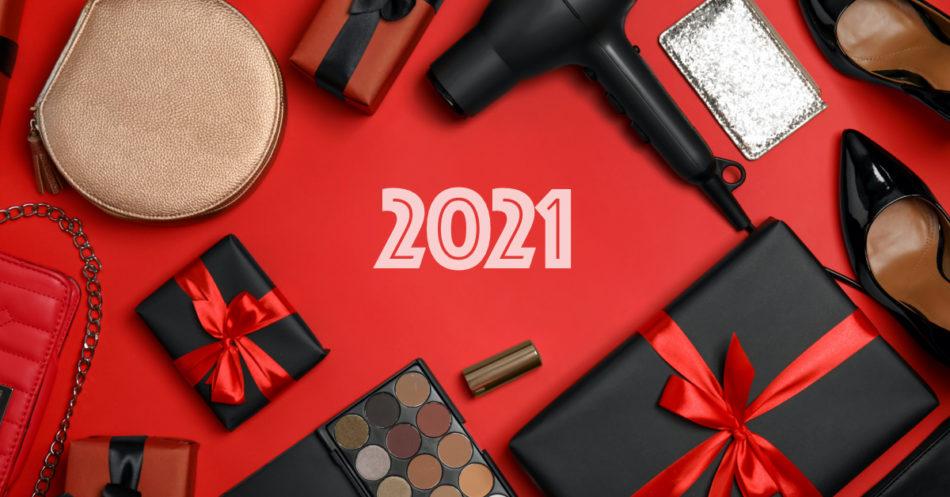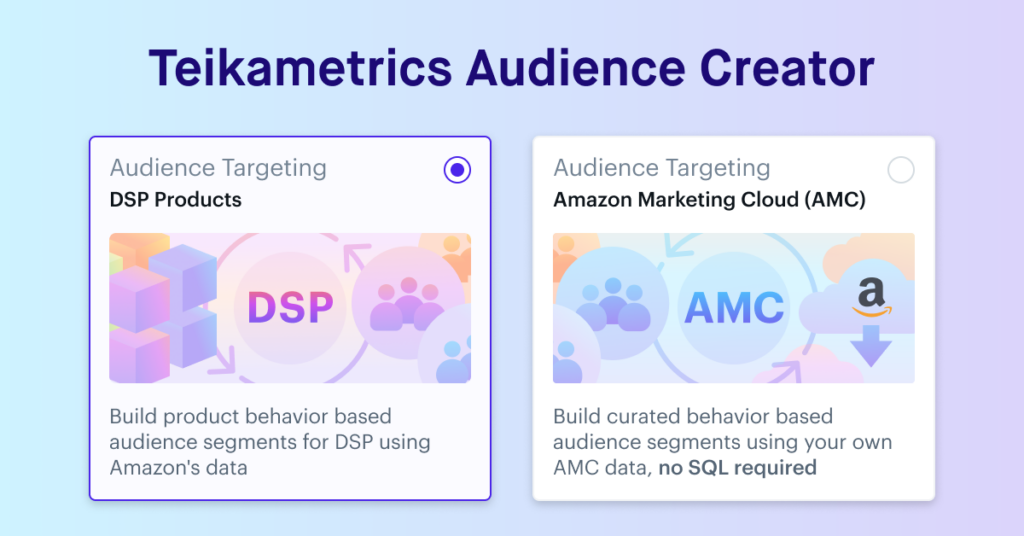Intro
The holidays are a critical time for ecommerce businesses. And this holiday season has been like no other.
According to Shopify, brands did $5.1 billion in revenue over BFCM 2020 – a growth rate of 76% over 2019.?
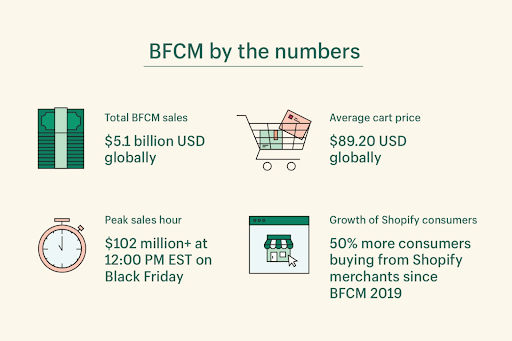
It’s common for stores to drive 50% of their entire annual revenue during Q4.
Why? It’s just much easier to sell products in November and December. Consumers are deal-hunting or shopping for gifts.
You see it in the numbers. Conversion rates can double or even triple during these critical months compared to the rest of your marketing calendar.
Because of this, ecommerce brands spend lots of money on marketing during these months. From the period right before BFCM through the shipping cut-off in mid December, brands may triple or even quadruple their media budgets.
This increased reach can help attract customers to your products, but you need to deploy this media spend intelligently in order to capture the requisite number of conversions without fruitlessly driving up media costs.?
That’s why you need to take the long-term view of Q4 and the transition into January. Because, even in January, you’re going to experience an overflow in traffic from the increased media spend from Q4. It’s not enough to just acquire a big group of new customers, especially if you’re doing so at relatively slim margins.
So, what’s the solution?
You need to turn holiday shoppers into loyal customers.
Whether you’re focused on selling on your own DTC site, Amazon, or a mix of both, this post will teach you the strategies you can implement to maximize the long-term value (LTV) from your holiday customers that you just brought in long after the holidays are over.
Let’s get into it.
Offer Rewards
A rewards program is a proven way to turn one-time buyers into loyal customers.
ThirdLove, one of the customers that we text for at Tone, uses a loyalty program to drive repeat purchases from loyal customers.
ThirdLove’s loyalty program is called Hooked, and it has three levels:
- Admirer. You get a free birthday gift.
- Enthusiast. You get early access to new collections, and free underwear with every purchase
- Devotee. You get free underwear with every purchase and exclusive giveaways.
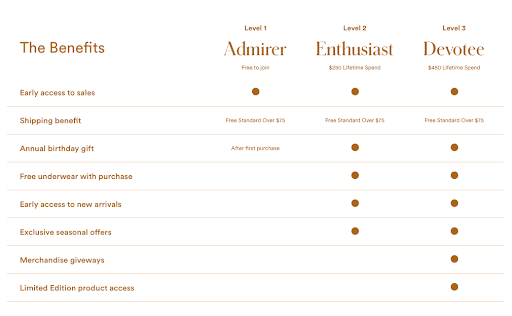
As of July 2019, 41% of ThirdLove’s customers signed up for its loyalty program. That’s an enviably high number, and it means that ThirdLove has built an incredibly loyal customer base. With its loyalty program, ThirdLove can test different product bundles and offers. Plus, they can understand the buying behaviors of their most important customers at a deep level.
Just by offering some freebies, ThirdLove has turned 41% of its buyers into loyal customers. ?
How about another example? One that you’re most likely already a member of…
Amazon Prime! This is the best loyalty program ever created.
Here are some mind-blowing numbers:
- On average, Amazon Prime members spend over $1,000 a year with Amazon
- There are over 150 Million Amazon Prime subscribers
- 20 percent of Amazon Prime members reported shopping on Amazon a few times per week.
Amazon launched Prime back in February of 2005. Since that time, its stock price has grown 90X. Amazon has done a lot of things right, but making its loyalty program the centerpiece of its strategy to turn one-time shoppers into loyal customers has turned out to be one of the biggest growth drivers.
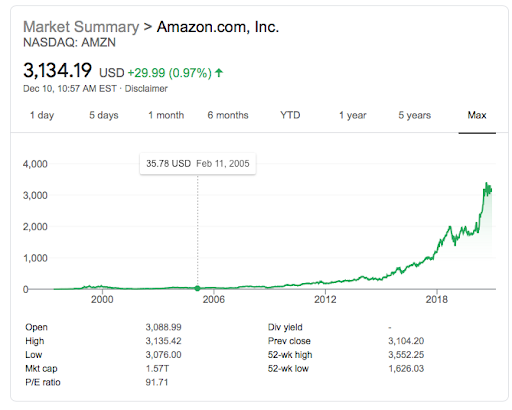
Build a community
Communities are a proven way to turn one-off customers into loyal advocates. Plus: compared to email, communities have the added benefit of a network. Once you cultivate an active and growing community, you get organic engagement without needing to do all of the legwork.
Peloton is a brand that’s well known for building a thriving community.
If you receive a Peloton for Christmas, you get pulled into a sticky product experience that makes it very unlikely that you’re going to return your bike.
Peloton has a 91 NPS score, which is higher than Apple and Netflix. There’s a reason why. With fitness in particular, group motivation and support is incredibly important.
Peloton knows this, and that’s why they built a robust community around the product. This community helps Peloton turn holiday shoppers into long-term, loyal customers.
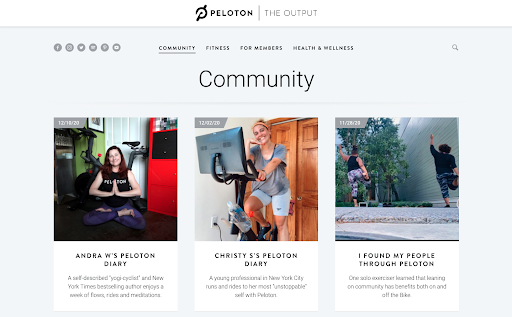
A community like Peloton’s is not built in a day. But don’t be afraid to start somewhere.
For a minimum-viable-community, you could launch a Facebook Group in just a few hours. Invite your new holiday customers into this low-barrier community and encourage them to engage. Chances are, the people that join this group will give you higher NPS scores and buy more from you over time. By doing this now, you’re setting yourself up to sell add-ons or create deeper relationships with customers going into the Q1 lull.
Get Human With Your SMS & Email Lists
It’s essential to find ways to create ongoing engagement with your SMS and email subscribers generated via your DTC site.
You won’t win by letting your lists sit for months, only to blast them with discounts and sales. You need to develop a real, human relationship with your customers.
How do you know if you’re building this relationship? It’s in the numbers. I’m talking about things like:
- Open Rates
- Click Rates
- Reply Rates
If you’re seeing these rates decline, that means that your SMS and email lists are getting stale. And you’re not turning holiday shoppers into loyal customers.
So how do you fix the problem?
Here’s one idea: take a human approach to your engagement. Usual Wines lets their customers text them when they want more wine.
Ordering more wine is just like texting a friend. How cool is that??
Here’s another example. Judy is a preparedness DTC that sells emergency kits for preparedness-minded consumers. Judy offers 24/7 SMS text alerts and weekly emergency preparedness tips. All of it is opt-in. You can bet that the engagement that Judy gets on their SMS messages is insanely high.

Judy is currently running a holiday offer for $145 off, which means they’re driving a big spike in holiday customers. All of these customers will enter a sticky product experience in which they’re getting constant value from the brand. Plus, that value is delivered directly. Because of that, these customers will be more likely to buy Judy products over and over again.
On your own DTC site, get in front of gift recipients
The coldest reality of the gifting season is that you’re not selling to your end customers.
During the months of November and December, ecommerce stores can see a huge spike in gifting purchases. The problem for DTC stores, who are used to owning the end customer relationship, is that they no longer have a direct line to their customer.
You can solve this in a few ways, depending on the nature of the product you sell.
1. Embed a form into your checkout process. Prompt the gifter to enter the giftee’s email address or phone number, along with the date that the gift is going to be delivered.
On that date, you can send a welcome email to the gift recipient that asks them to opt into future emails and texts to get product updates and support. This is a respectful way to gain permission to help your new customer get the most value out of your product.
2. When shipping DTC orders, use your packaging to gain direct access to your customer.
In your packaging, you can include an insert or integration that asks your new customer to create an account with your company. Maybe you have a mobile app that pairs with your product, or you offer a rewards program. Whatever your hook is, it’s critical to drive that end user into direct communication with you.
One of our customers at Tone, Usual Wines, adds a phone number in every shipment that customers can text to get more product. Once the customer texts the number, they are prompted to opt into future offers via SMS. This is a frictionless and creative way to turn a one-time customer into a loyal subscriber.
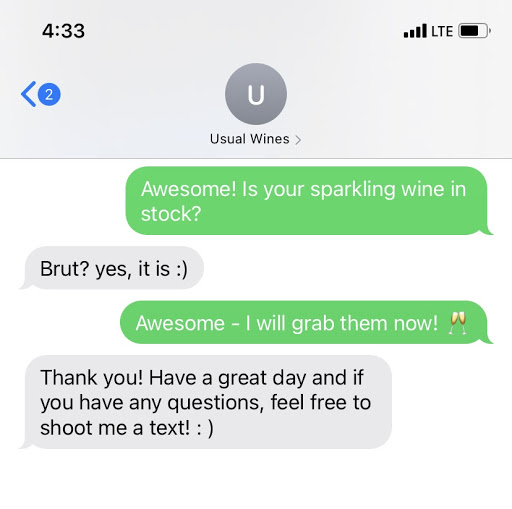
What’s the lesson here? Get a direct line to your customer. A lack of product education or customer service will kill product satisfaction. This leads to the most painful January metric for ecommerce stores: your holiday return rate.
Be proactive about reducing your return rate by finding creative ways to communicate with the people who actually end up using your products. By creating a relationship with them now, you can find ways to activate them directly in the future.
Keep in mind that placing an insert in a package is a violation on Amazon, so refrain from doing so for FBA or FBM purchases to avoid getting your account suspended.
Provide a lightning-fast customer experience.
People expect to talk to brands the same way they talk to their friends.
This means that they want to text your business, and they expect to get an answer from a real human, fast. This applies to the shopping process and your ongoing relationship with the customer.
Speed is critical! Here’s the data from BFCM 2020 from Shopify:
“Finally, whether it’s responding on social media platforms or via SMS, the faster a brand responds, the more likely they are to secure a sale. Shopify’s data indicates that businesses who respond to a shopper’s chat within 5 minutes are 70% more likely to get a sale from said shopper.”
The fastest way to lose a customer to your competition is to give them a slow experience.
If your business just acquired a big spike in customers over BFCM, you can expect that trend to continue up until the last day to ship in time for the holidays. During this period, you need to make sure that every interaction that you have with your new crop of customers is speedy.
This extends to Amazon seller feedback and other questions you get from your shoppers via the retail site. As a prominent example, answering consumer questions directly on the product detail page quickly helps showcase that your product is well-supported, and puts you in a better position during comparison shopping.
Additionally, shipping questions demand an immediate response. And after your new customers receive your product, you should make it easy for them to get in touch with product questions.
On your DTC site, SMS is the best way to make this happen. But SMS brings higher expectations. Generally, people are OK waiting 24 hours to receive a response to their email. People expect to get a response via text a lot quicker.
That’s why at Tone, we prioritize a lightning-fast experience. Over BFCM, we handled millions of text message conversations.
What was our average response time? 3.1 minutes.
That’s the experience that the consumer expects, and it’s what your brand needs to deliver in order to win loyal customers. By getting this set up now, your effort will be fine-tuned when those new customers start reaching out.
Final Thoughts
If you’re an ecommerce brand, your highest revenue quarter of the year is winding down. It’s easy to get complacent.
But this is the beginning. You just invested a lot into your marketing the past few months in the form of:
- Advertising dollars
- Creative production costs
- Your time
Don’t let it go to waste by treating your new holiday customers like one-time buyers.
Instead, focus on these strategies now that will pay dividends later:
- Find creative ways to get in front of gift recipients
- Build an engaging community around your customers
- Get human with your SMS and email lists
- Offer rewards
- Provide a lightning-fast experience (on Amazon and your DTC site)
By doing so, you’ll give yourself the best chance of turning your holiday shoppers into loyal customers.
Play the long game.
That’s how you win ecommerce in 2020, 2021, and beyond. ?
Tone is the leading conversational SMS sales platform for online businesses. Tone’s technology learns your brand’s voice, while the company’s team of superhuman agents uses it to delight customers and drive up to 26% more sales. Over 1,200 brands trust Tone to build 2-way texting relationships with their customers.
Special Offer: For friends of Teikametrics doing $1M+ annually on Shopify, Tone is offering a FREE UV Phone Sanitizer from PhoneSoap (one of Tone’s merchants that just crushed its BFCM revenue goals) to anyone who books a demo now through December 24th, 2020. Schedule a demo here.


